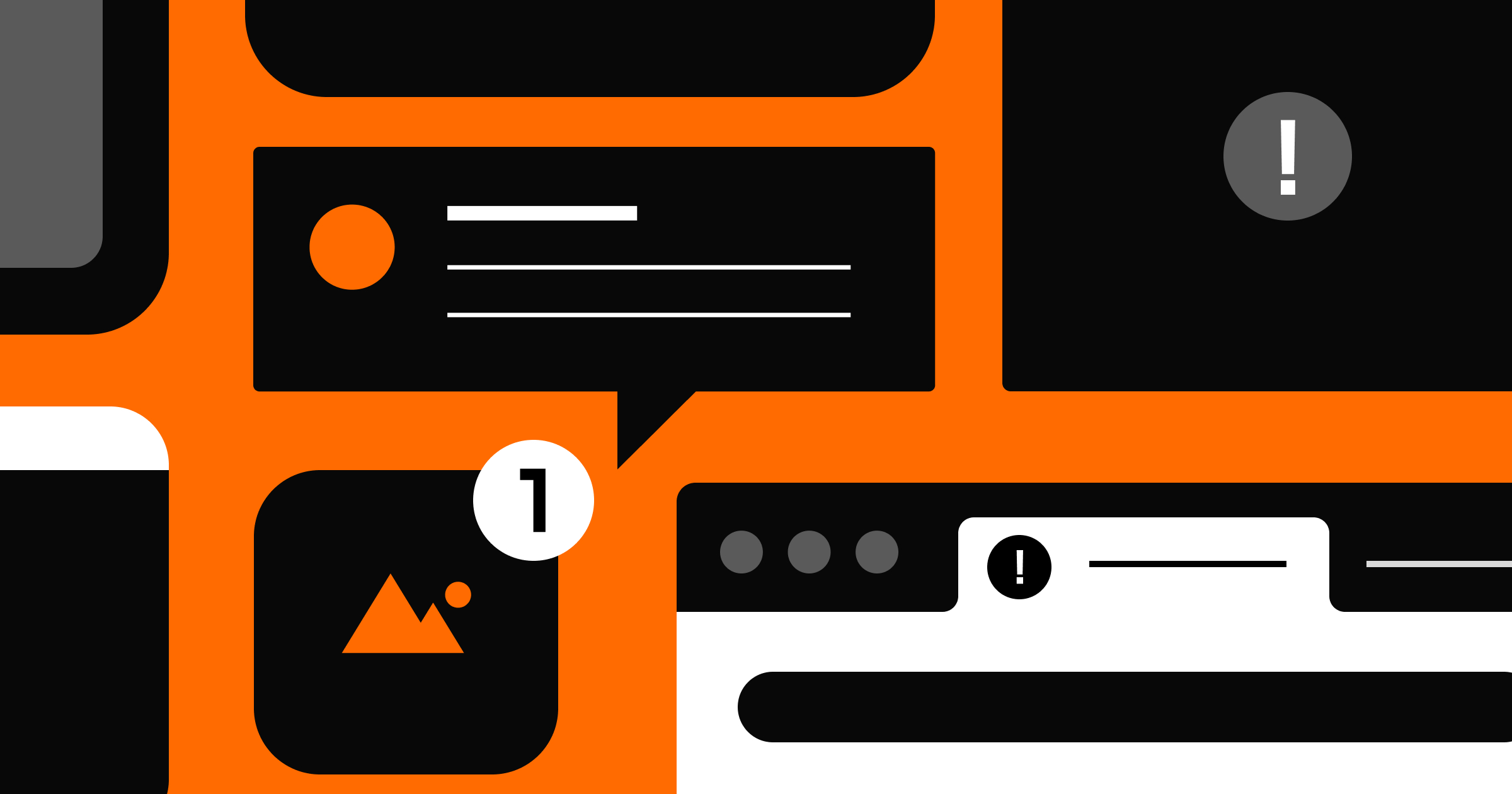A lead magnet is a powerful marketing tool that can turn casual visitors into loyal leads.
Lead generation is one of the most important processes for marketing teams — and it’s not easy. Countless products and services vie for your audience's attention, and potential customers are rightfully protective of their time. They don't want advertising emails to flood their inbox, but they do want helpful resources and useful information about the services or products they’re using. Luckily, marketers and web designers can navigate this challenge with lead magnets.
This marketing strategy works by offering people an incentive (typically free content) in exchange for contact details. Because the lead magnet establishes an expectation that you'll continue to provide rewards, it’s an effective method of initiating relationships with potential customers. With a few strong lead magnet ads, you can generate leads substantively and, in turn, gain more active customers.
What’s a lead magnet?
Lead magnets are incentives you offer potential customers in exchange for their contact info, with the goal of generating leads or prospects for your business. Ebooks, white papers, and infographics are examples of common lead magnets.
Effective lead magnets are:
- Time-specific — Giving a specific, limited timeline to take advantage of the magnet encourages potential customers to act quickly.
- Valuable — The more value your lead magnet provides, the better. Offer customers something unique and worthwhile, like a highly rated ebook or a checklist they can use regularly.
- Simple — Lead magnets often ask readers to sign up for a mailing list. Keep the request short and the user experience (UX) frictionless.
Lead magnet benefits
Here’s why lead magnets are a great tactic for persuading visitors to offer the information you need to improve lead generation.
Saves time and money
Lead magnets are always digital in nature, which makes them easy to distribute. Once you’ve created them, establish an automated workflow for sending them to customers. This workflow will continue generating leads at little-to-no cost in either time or money.
Improves brand perception
Being generous with the resources you offer demonstrates your company's strength in the market. You want potential customers to feel like your company can sustainably afford to offer impressive incentives. A modest investment into building your brand is worth it if it generates quality leads.
Increases customer loyalty
A compelling lead magnet shows potential customers that you understand them. Offer something they might genuinely want and they'll remember it — even if they turn it down.
For example, a downloadable task management checklist would make a strong lead magnet for a subscription-based project management tool for enterprise customers.
By offering truly helpful resources, you showcase your value and entice potential customers to sign up. Even if they don’t convert immediately, they’ll remember your brand’s quality and attention to customers’ needs and interests.
Types of lead magnets
The best lead magnets use customer-centric designs to compel the reader to share their contact information. Here are some specific types of lead magnets that can benefit both your company and potential customers.
1. Webinars
Host an exclusive webinar series and offer potential customers free access. This strategy will inspire new people to offer contact details and bring them to the webinar platform, where you can introduce them to your products and services.
Here are a few types of webinars you could offer:
- How to — Teach new customers how to use your products.
- Behind the scenes — Invite people into your product development process.
- Company history — Discuss your company’s “how” and “why” to encourage viewers to join your community.
2. Mini guides
A well-designed guide builds brand trust and establishes you as an industry leader. These useful resources should align with your offering, speak to current trends, and give potential customers something fun or valuable.
Here are some mini guide ideas:
- Community spotlights — Highlight novel ways people use your product.
- White papers and reports — Show your audience important facts about your industry, such as productivity, sustainability, and development statistics.
- Expert interviews — Offer exclusive access to a recorded interview from a trusted industry veteran.
3. Templates
For creative service products like a web design platform or image editing software, try offering customizable templates. You can create these templates specifically for lead magnet campaigns or, if you already have a template gallery, provide access to paid templates.



















Unifying web design and data
Discover how using Hubspot's powerful CRM with Webflow can enhance customer experiences and drive your business growth.
How to create a lead magnet campaign: 4 steps
Lead magnets aren't complex, but following this four-step guide will help you make the most impact.
1. Define your target audience
Use current customer details and market research to determine your primary audience. For a modern approach, try psychographic marketing data, which segments customers according to interests rather than demographics.
For example, if you're marketing enterprise-grade security software, your sales figures might show that cybersecurity consultants are your biggest market — but your market research shows you have very little engagement with that audience. In this case, a lead magnet like ebooks about cybersecurity or access to an otherwise paywalled security feature is a great way to generate engagement.
Based on your research, identify a target group that meets these criteria:
- Long-time customers — Identify an audience that’s likely to stick around as your product matures. Tech early adopters, for example, are known for their willingness to stick with a new product through its ups and downs.
- Brand ambassadors — Discover which prospects seem to promote products they love, checking their activity on professional social media sites like LinkedIn. If you can win them over, these customers are more likely to publicize and recommend your product. You might even see which current customers are active brand ambassadors, evaluating their profiles and using this data to determine your target audience.
2. Select your lead magnet
With a specific target audience in mind, consider their perspectives and try to identify precisely what they want. Here are a few ideas to get started:
- Identify popular features — Figure out which features draw users to your product and what makes them continue using it. Then, create lead magnets that pair well with your most popular offerings.
- Surface trends — Find similarities in people's purchasing habits, such as the day of the week, time of day, and average purchase total. This approach will help you fine-tune a strategy for offering specific magnets when and where they’re most effective.
- Conduct interviews — Learn more about your target audience by interviewing existing and prospective customers. Ask what motivates them and what compels them to sign up for a service.
With this information, A/B test a few lead magnets on small segments of your target audience to find the most promising resource.
3. Design your campaign
Create a campaign that uses pop-ups, emails, and social media posts to promote your lead magnet. While you can directly share a lead magnet via these methods, you should also create a landing page for your resource, sending traffic to your website via all other channels.
Make various versions of your landing pages, pop-ups, emails, and social media posts, and A/B test them to find the most successful designs. You'll know you've found a great option when you see an increase in conversions compared to previous versions.
4. Launch and analyze
Launch your campaign and closely monitor key metrics like download rates, conversion rates, and engagement levels. When your campaign is complete, survey your audience to determine if you’ve successfully engaged them. You can use this data to create a case study that informs your next lead magnet campaign.
Innovate, engage, and convert with Webflow
A lead magnet is a reliable technique for gaining contact details you can use in marketing materials like email campaigns. With sound research, creativity, and a high-performance landing page, you can attract potential customers and boost company success.
Webflow brings design, development, and marketing teams together to create visually stunning landing pages that persuade viewers to exchange their information for your resource. Explore Webflow Designer and discover how the CMS, built-in SEO features, and edit mode can boost your lead magnet campaigns.

Webflow Enterprise
Trusted by over 300,000 of the world’s leading brands, Webflow Enterprise empowers your team to visually build, manage, and optimize sophisticated web experiences at scale — all backed by enterprise-grade security.






























